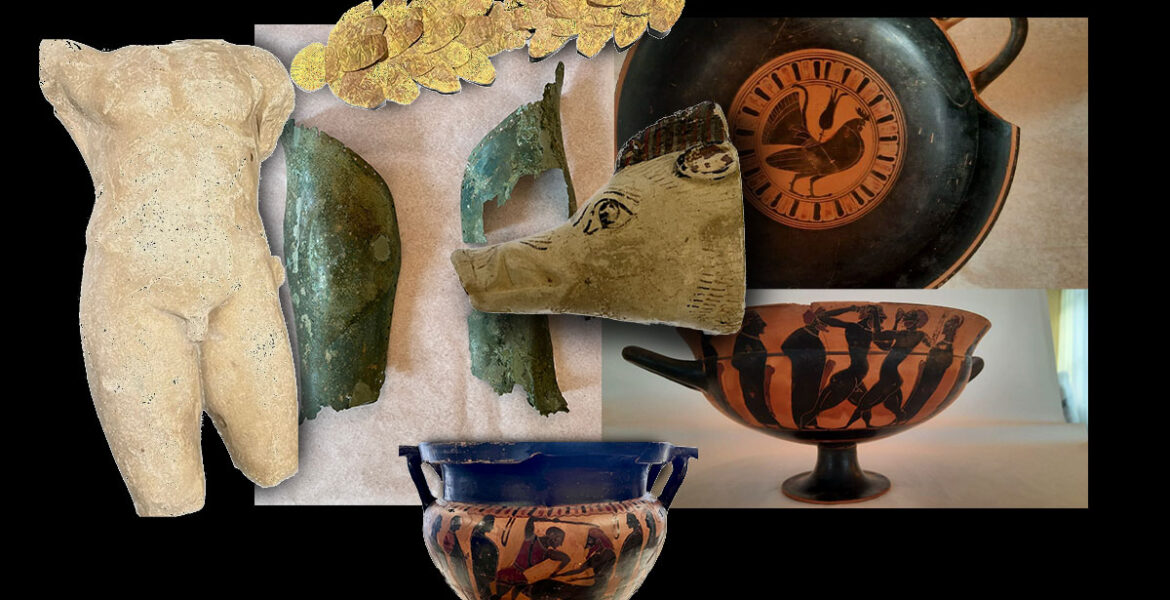The Greek Culture Ministry has announced the successful repatriation to Greece of fifteen ancient artefacts, dating from the prehistoric to the Roman period, in an example of cross-cultural co-operation and single-minded determination on the part of the Greek State to restore stolen antiquities to their rightful home.
The artefacts in question were recovered following legal intervention by the Greek State in the Swiss judicial system and the obtaining of an order by a Geneva Court in July 2022 after the seizure of the cultural property by Swiss authorities that these rare objects were the products of illegal trafficking and belonged to Greece.
The legal action was brought against an unidentified but apparently “well-known antiquities dealer”. One is left to speculate on his identity but we do know that some of the most notorious art smugglers in recent times have got their comeuppance, including the UK art dealer Robin Symes, the Italian smuggler Gianfranco Becchina, and the antiques dealer, Ali Aboutaam.
The recovered objects are exquisite.
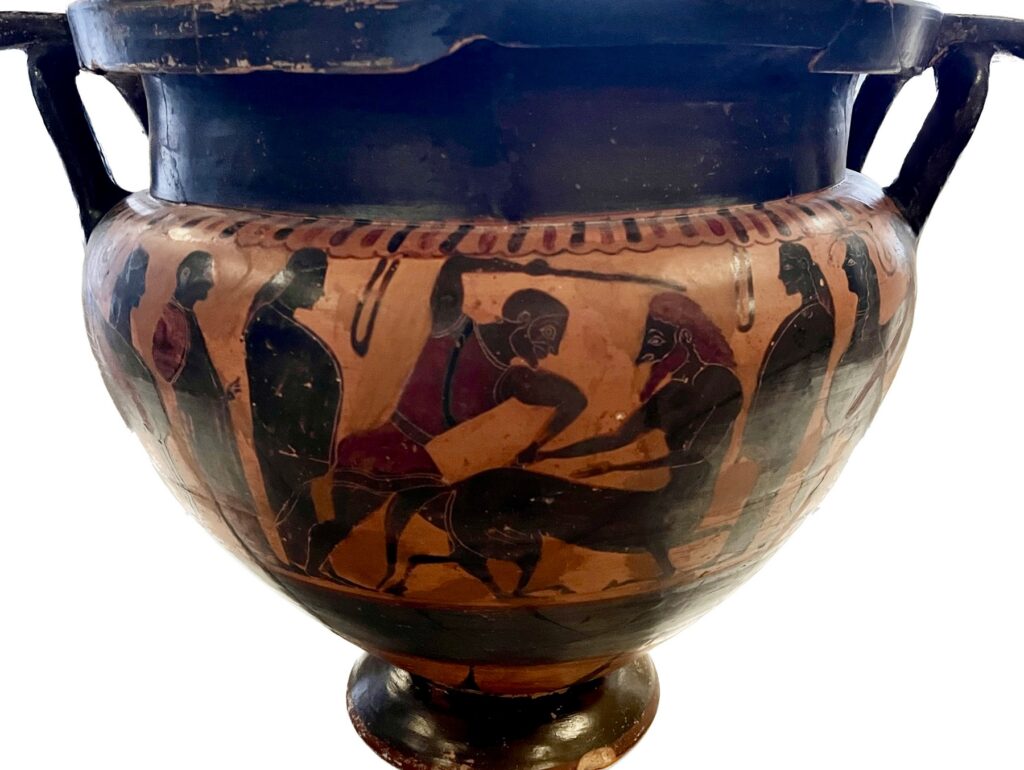
Arguably one of the most impressive is an Attic black-figure krater attributed to the group of the potter Lydos, depicting Heracles fighting the centaur Nessus (and dating to circa mid-6th century BC).
The iconic imagery of Heracles slaying the centaur Nessus is a core aspect of Greek mythology. Nessus was one of the Thessalian Centaurs who attempted to violate Heracles’ bride, Deianara. Heracles in a moment of rage shot Nessus with a poisoned arrow. The dying centaur persuaded Deianeira to take some of his poisoned blood as a love charm should Heracles ever prove unfaithful and this ultimately cost our hero’s life.
Another fine example of this work is to be found in the Louvre in Paris:
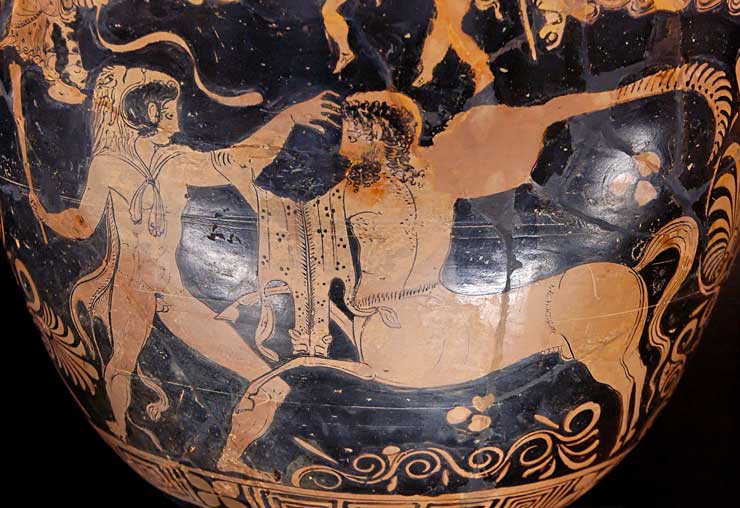
The Hellenistic period of Greek art is marked by the production of exquisite gold jewellery and ornamentation and amongst the collection of looted treasures recovered in Geneva is a well-preserved, embellished gold diadem or crown-like ornament with intricate gold metal laurel leaves (dating to the third century BC).

A pair of bronze greaves, or leg guards, belonging to an ancient Greek hoplite from the Classical period (480-323 BC), is also dramatic.
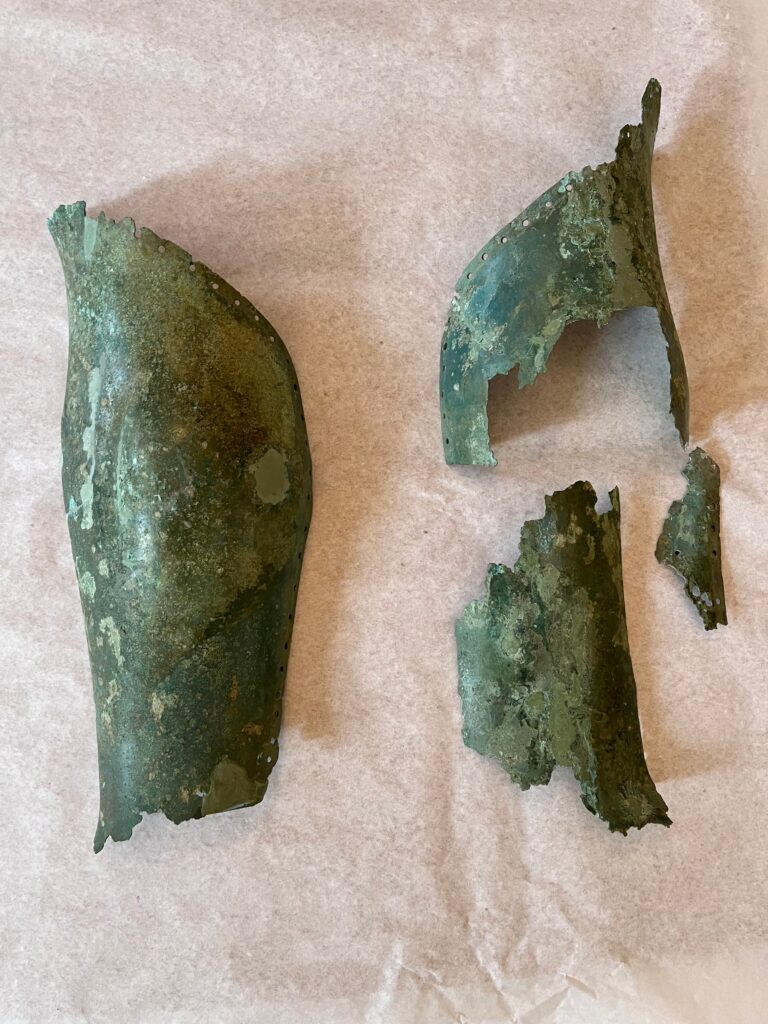
And finally, a terracotta kylix or Siana drinking goblet with a representation of boxers in the presence of judges is thought to be from around the middle of the 6th century BC as an example of Corinthian vase painting.
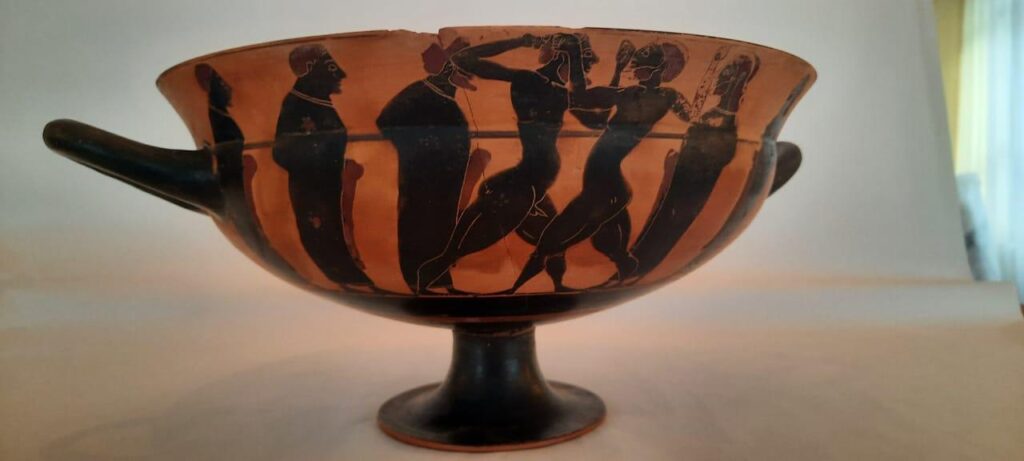
In a media release the Greek Culture Minister, Dr Lina Mendoni, explained that after the Greek authorities were alerted to the case by the Greek Consul General in Geneva, Mr. Alexandros Gennimatas, they appointed an eminent Greek-Swiss lawyer, Mr. Romanos Skandamis, to submit Greece’s legal claim to the Geneva court.

Dr Mendoni acknowledged the decisive contribution of the Consul-General as well as the assistance of the Swiss School of Archaeology in Greece and the steadfast commitment by Greece’s Directorate for Documentation and Protection of Cultural Property in combating the illicit trade of Greek cultural property abroad.

The Culture Minister also restated Greece’s long-standing position on the return of looted cultural property:
"The Ministry of Culture and Sports, especially in recent years, attaches great importance to the repatriation of every cultural asset which is inextricably linked to our cultural heritage. The return of cultural goods to their place of birth, beyond a universal issue, is a moral obligation between peoples in the context of the respect and protection of the common global cultural heritage. The need to repatriate cultural property that has been removed illegally or through processes of questionable legality is dictated by the fundamental principles of international conventions, regardless of time limits or limitations".
Both Greece and Switzerland are determined to fight the illegal trafficking of cultural property, having signed back in 2007 a bilateral agreement for the repatriation of stolen cultural artefacts.
The return of the Swiss-based artefacts is to be applauded as an initiative that has seen Greece’s enormous diplomatic soft power, facilitated by decisive legal action, used effectively to protect Greece’s cultural heritage.
George Vardas is the Arts and Culture Editor and is also co-Vice President of the Australian Parthenon Association

